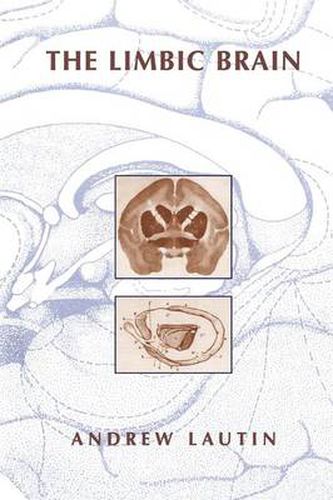Readings Newsletter
Become a Readings Member to make your shopping experience even easier.
Sign in or sign up for free!
You’re not far away from qualifying for FREE standard shipping within Australia
You’ve qualified for FREE standard shipping within Australia
The cart is loading…






This title is printed to order. This book may have been self-published. If so, we cannot guarantee the quality of the content. In the main most books will have gone through the editing process however some may not. We therefore suggest that you be aware of this before ordering this book. If in doubt check either the author or publisher’s details as we are unable to accept any returns unless they are faulty. Please contact us if you have any questions.
Nearly, 50 years ago, Karl Pribram in a discussion section accompanying MacLean’s proposal of a limbic system, criticized the visceral or limbic brain concept as theoretically too vague and cumbersome. In a recent review of the limbic system, Swanson points to Brodal’s criticism that the discovery of connections of limbic structures with virtually all parts of the nervous system render the concept of the limbic system useless, and better abandoned. Additional dissatisfaction surrounding the limbic brain concept stems from the feeling that it is historically inert (an antiquated 19th century construct). In our current age of neural networks, and parallel distributed process it is of little value, merely an historical curio. So why then this int- duction to limbic brain anatomy? We offer several interrelated rationales behind our labors. Recapitulation in the Service of Education: Although concepts had evolved in the second half of this century which effectively overthrew the idea of relatively isolated hemispheric districts (i. e. striatal, cortical, and limbic), parsing the hemisphere into these three districts was an important preliminary step achieved by our forebears in their efforts to understand the large scale structure of the higher mammalian cerebral hemisphere. An examination of how the limbic brain concept came to be provides an opp- tunity to recapitulate the process of exploration, discovery, and und- standing as it relates to one of these principle hemispheric domains.
$9.00 standard shipping within Australia
FREE standard shipping within Australia for orders over $100.00
Express & International shipping calculated at checkout
This title is printed to order. This book may have been self-published. If so, we cannot guarantee the quality of the content. In the main most books will have gone through the editing process however some may not. We therefore suggest that you be aware of this before ordering this book. If in doubt check either the author or publisher’s details as we are unable to accept any returns unless they are faulty. Please contact us if you have any questions.
Nearly, 50 years ago, Karl Pribram in a discussion section accompanying MacLean’s proposal of a limbic system, criticized the visceral or limbic brain concept as theoretically too vague and cumbersome. In a recent review of the limbic system, Swanson points to Brodal’s criticism that the discovery of connections of limbic structures with virtually all parts of the nervous system render the concept of the limbic system useless, and better abandoned. Additional dissatisfaction surrounding the limbic brain concept stems from the feeling that it is historically inert (an antiquated 19th century construct). In our current age of neural networks, and parallel distributed process it is of little value, merely an historical curio. So why then this int- duction to limbic brain anatomy? We offer several interrelated rationales behind our labors. Recapitulation in the Service of Education: Although concepts had evolved in the second half of this century which effectively overthrew the idea of relatively isolated hemispheric districts (i. e. striatal, cortical, and limbic), parsing the hemisphere into these three districts was an important preliminary step achieved by our forebears in their efforts to understand the large scale structure of the higher mammalian cerebral hemisphere. An examination of how the limbic brain concept came to be provides an opp- tunity to recapitulate the process of exploration, discovery, and und- standing as it relates to one of these principle hemispheric domains.